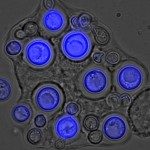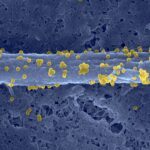Link to Pubmed [PMID] – 24272063
Link to DOI – 10.1007/s10096-013-2015-5
Eur J Clin Microbiol Infect Dis 2014 May; 33(5): 689-702
Nocardiosis is a rare opportunistic infection caused by Nocardia spp., an aerobic actinomycete, that mainly affects patients with cell-mediated immunity defects, such as transplant recipients. Despite recent progress regarding Nocardia identification and changes in taxonomic assignment, many challenges remain for the diagnosis or management of nocardiosis. This opportunistic infection affects 0.04 to 3.5 % of patients with solid organ or hematopoietic stem cell transplantation, depending on the organ transplanted, cytomegalovirus (CMV) infection, corticosteroids dose and calcineurin inhibitors level. Nocardiosis diagnosis relies on appropriate clinical, radiological and microbiological workup that includes the sampling of an accessible involved site and molecular microbiology tools. In parallel, extensive clinical and radiological evaluations are mandatory, including brain imaging, even in the absence of neurological signs. In transplanted patients, differential diagnosis is challenging, with co-infections reported in 20 to 64 % of cases. As the antibiotic susceptibility pattern varies among species, the antimicrobial regimen before species identification should rely on the association of antibiotics active on all species of Nocardia. Bactericidal antibiotics are required in cases of severe or disseminated disease. Furthermore, in transplant recipients, combination therapy is difficult to manage because of cumulative toxicity and interactions with immunosuppressive agents. Because of a high recurrence rate, antibiotic therapy should be prescribed for 6 to 12 months.



